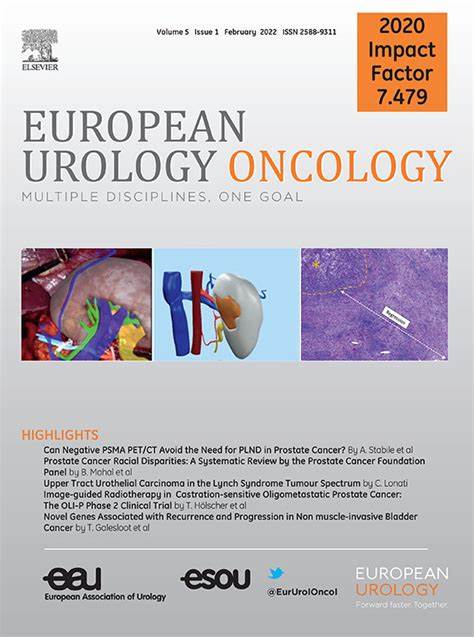Patient- and Procedure-specific Risk Factors for Urinary Incontinence After Robot-assisted Radical Prostatectomy: A Nationwide, Population-based Study
IF 9.3
1区 医学
Q1 ONCOLOGY
引用次数: 0
Abstract
Background and objective
Postprostatectomy urinary incontinence (PPI) is a common complication following robot-assisted laparoscopic radical prostatectomy (RALP), with incidence rates of 4–31%. This study examines associations between patient- and surgery-specific risk factors and PPI.
Methods
We analysed data from 13 754 men who underwent RALP between 2017 and 2021, registered in the National Prostate Cancer Register of Sweden. Electronic patient-reported outcome measure (ePROM) questions were completed by 37% at 3 mo and 47% after 12 mo, including questions on pad use. PPI was defined as the use of more than one pad (primary) and any pad use (secondary). Poisson regression assessed the associations between PPI and factors such as age, comorbidity, prostate volume, nerve-sparing procedures, and surgical details.
Key findings and limitations
At 12 mo, 17% (1086/6413) reported the use of more than one pad and 49% (3113/6413) reported any pad use. Significant risk factors for incontinence in a multivariable analysis (more than one pad) included age ≥75 versus <65 yr (p < 0.001; relative risk [RR] 2.03; 95% confidence interval [CI] 1.67–2.48), urethral division with margin from the apex versus maximal urethra length (p < 0.001; RR 1.95; 95% CI 1.57–2.43), non–nerve-sparing procedures (p < 0.001; RR 1.70; 95% CI 1.432.03), and prostate volume ≥90 versus <30 ml (p = 0.018; RR 1.47; 95% CI 1.07–2.01). Limitations included missing data on surgical variables and a relatively low ePROM response rate.
Conclusions and clinical implications
Older age, large prostate size, and non–nerve-sparing surgery increase the risk of PPI, underscoring the importance of shared decision-making in treatment planning. However, these factors explain only a part of PPI.
机器人辅助根治性前列腺切除术后尿失禁的患者和手术特定危险因素:一项全国性的、基于人群的研究。
背景与目的:前列腺切除术后尿失禁(PPI)是机器人辅助腹腔镜根治性前列腺切除术(RALP)后常见的并发症,发生率为4-31%。本研究探讨了患者和手术特定风险因素与PPI之间的关系。方法:我们分析了在瑞典国家前列腺癌登记处登记的2017年至2021年期间接受RALP的13754名男性的数据。电子患者报告的结果测量(ePROM)问题在3个月时完成了37%,12个月后完成了47%,包括衬垫使用的问题。PPI定义为使用多个垫(主要)和任何垫(次要)。泊松回归评估PPI与年龄、合并症、前列腺体积、神经保留手术和手术细节等因素之间的关系。主要发现和局限性:12个月时,17%(1086/6413)报告使用多个垫子,49%(3113/6413)报告使用任何垫子。多变量分析(多于一个垫)中尿失禁的重要危险因素包括年龄≥75岁与结论和临床意义:年龄较大、前列腺肥大和非神经保留手术增加了PPI的风险,强调了在治疗计划中共同决策的重要性。然而,这些因素只能解释PPI的一部分。
本文章由计算机程序翻译,如有差异,请以英文原文为准。
求助全文
约1分钟内获得全文
求助全文
来源期刊

European urology oncology
Multiple-
CiteScore
15.50
自引率
2.40%
发文量
128
审稿时长
20 days
期刊介绍:
Journal Name: European Urology Oncology
Affiliation: Official Journal of the European Association of Urology
Focus:
First official publication of the EAU fully devoted to the study of genitourinary malignancies
Aims to deliver high-quality research
Content:
Includes original articles, opinion piece editorials, and invited reviews
Covers clinical, basic, and translational research
Publication Frequency: Six times a year in electronic format
 求助内容:
求助内容: 应助结果提醒方式:
应助结果提醒方式:


